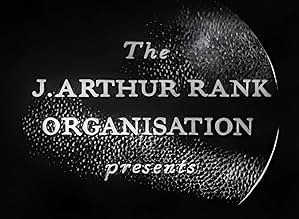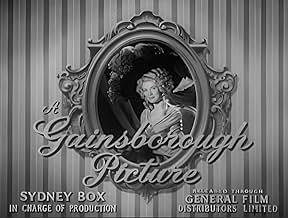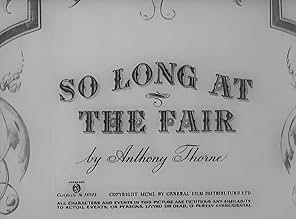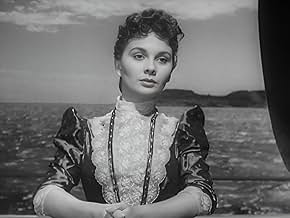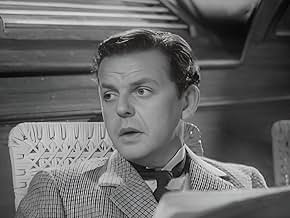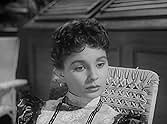Füge eine Handlung in deiner Sprache hinzuVicky Barton visits Paris with her brother Johnny, only to discover the following morning he has gone missing and the hotel staff have no recollection of his presence.Vicky Barton visits Paris with her brother Johnny, only to discover the following morning he has gone missing and the hotel staff have no recollection of his presence.Vicky Barton visits Paris with her brother Johnny, only to discover the following morning he has gone missing and the hotel staff have no recollection of his presence.
- Auszeichnungen
- 2 Nominierungen insgesamt
- Doctor Hart
- (as Andre Morell)
- Madame Verni
- (Nicht genannt)
- Gendarme
- (Nicht genannt)
- Hotel Guest
- (Nicht genannt)
- German Hotel Guest
- (Nicht genannt)
- Charlotte
- (Nicht genannt)
- Pilkington
- (Nicht genannt)
Empfohlene Bewertungen
Director Terence Fisher leads his audience with aplomb from the gaiety of the Moulon Rouge to the lugubrious shadows of a convent hospital with an assurance missing from most modern thrillers.
Production values are first rate from the elegant hotel to the elaborately wrought fair sequences.
One could scarcely ask for a more debonair and attractive couple than Mr. Bogarde, (with his famous pompadour intact), and the exquisite Miss Simmons, who, in her turn provides a welcome reminder of 19th century feminine deportment. And Villainess Cathleen Nesbitt, with her cut glass diction, and rustling black bombazine, defines sinister suavity in a way you won't soon forget.
Kudos also to Honor Blackman who wears a bustle with distinction.
Jean Simmons gave a convincing performance as the young girl, terrified and confused by the disappearance overnight of her brother and the refusal of the hotel staff to acknowledge that he even existed. Dirk Bogarde gives his usual excellent performance as the English artist who comes to her rescue.
Although the plot is fairly predictable, the suspense is maintained right to the end, the setting of Paris during the Great Exhibition is picturesque and both Miss Simmons and Mr Bogarde look delightful What more can you ask for?
Adapted from Thorne's novel of the same name, story is set in Paris 1889 (not 1896 as some other sources strangely suggest it is) and sees Simmons as Vicky Barton, who awakes in her hotel to find that her brother, and his hotel room, are missing. With the hotel staff adamant that she checked in alone and that her brother never accompanied her, Vicky is confused and very alone. However, hope comes in the form of handsome artist George Hathaway (Bogarde), who had an exchange with Vicky's brother and therefore can vouch for his existence. But with the odds stacked against them and proof hard to find, can the pair of them uncover the truth and solve the mystery?
It seems now to be a familiar plot, but it wasn't back then and the story's origin is derived from an urban legend. What unfolds over the film's running time is a sharply told mystery that is infused with good quality drama. Simmons and Bogarde make for a very engaging couple and it's very easy to root for them as they set about their sleuthing. However, the film is split into two as regards tonal worth.
The first half is the most atmospheric as Simmons' Vicky is a stranger in a strange land, her fraught helplessness over her missing brother is enhanced by the language problems. This aspect impacts on us the viewers by there not being any sub-titles for the French speaking parts of the script. A good move is that.
Once Vicky teams up with George the thriller suspense gives way to detective mystery, which is fine, and for sure the "reveal" that comes in the finale is credible, but it's hard not to lament a touch that the pic hasn't stayed in "darker" mode, even if the score is consistently too jaunty for such a story. While the black and white photography is, however, tonally pleasing, and the Victorian costuming is authentic looking.
There's a couple of off kilter shots but noir like visuals are in short supply, and characterisations and basis of plotting do not scream out as being noir influenced, so you have to wonder why the film has found its way into a DVD collection of British Noir? It's a classy little mystery, boosted by some prime British acting talent, but first time viewers expecting a Brit film noir should heed my warning, it's not! 7/10
As for the story,it's an absorbing story of a gentleman who vanishes in the grand tradition of "the lady vanishes" but Jean Simmons's character,who's slowly believing she's losing her mind reminds me more of "Gaslight" (1940 and 1944).The scene with the balloon is a great moment:is -it really an accident? Who's behind all that?Spies?Thieves?Murderers?You'll be wondering during the whole movie and the ending,for once ,will not disappoint you:it's so unexpected that it's impossible to guess it .Excellent performances by the whole cast.
Wusstest du schon
- WissenswertesUnusual for a British movie of this period, this was filmed in four weeks in Paris.
- PatzerAt the hospital at the end, there is a statue of St. Therese of Lisieux. The Exposition took place in 1889, eight years before Therese died, and she wasn't made a saint until about 1925.
- Zitate
Mrs. O'Donovan: When you were dancing, did he say anything?
Rhoda O'Donovan: He said he loved Paris, he loved his studio, he loved his painting, he loved dancing, but he didn't say anything about loving me.
Mrs. O'Donovan: You don't encourage him, Rhoda, that's the trouble. How do you expect him to make up his mind if you don't help him? Where would you be if I hadn't made up your father's mind?
Rhoda O'Donovan: Really, Ma, what an improper question!
- Alternative VersionenThe same story is alluded to in Ernest Hemingway's early satirical novel "The Torrents of Spring," published in 1926, the same year as "The Sun Also Rises." One of the characters recounts the events as having happened to her. By way of explanation, Hemingway recounts the tale, the version with the mother, in the afterword, the "Author's Final Note to the Reader."
- VerbindungenFeatured in TCM Guest Programmer: 15 Fan Programmers (2009)
- SoundtracksCoronation March
(uncredited)
from "Le Prophete"
Music by Giacomo Meyerbeer
Used during opening credit sequence
Top-Auswahl
- How long is So Long at the Fair?Powered by Alexa
Details
- Erscheinungsdatum
- Herkunftsland
- Offizieller Standort
- Sprachen
- Auch bekannt als
- Idilio en París
- Drehorte
- Paris, Frankreich(This information already exists in your trivia section)
- Produktionsfirma
- Weitere beteiligte Unternehmen bei IMDbPro anzeigen
- Laufzeit
- 1 Std. 26 Min.(86 min)
- Farbe
- Seitenverhältnis
- 1.33 : 1

